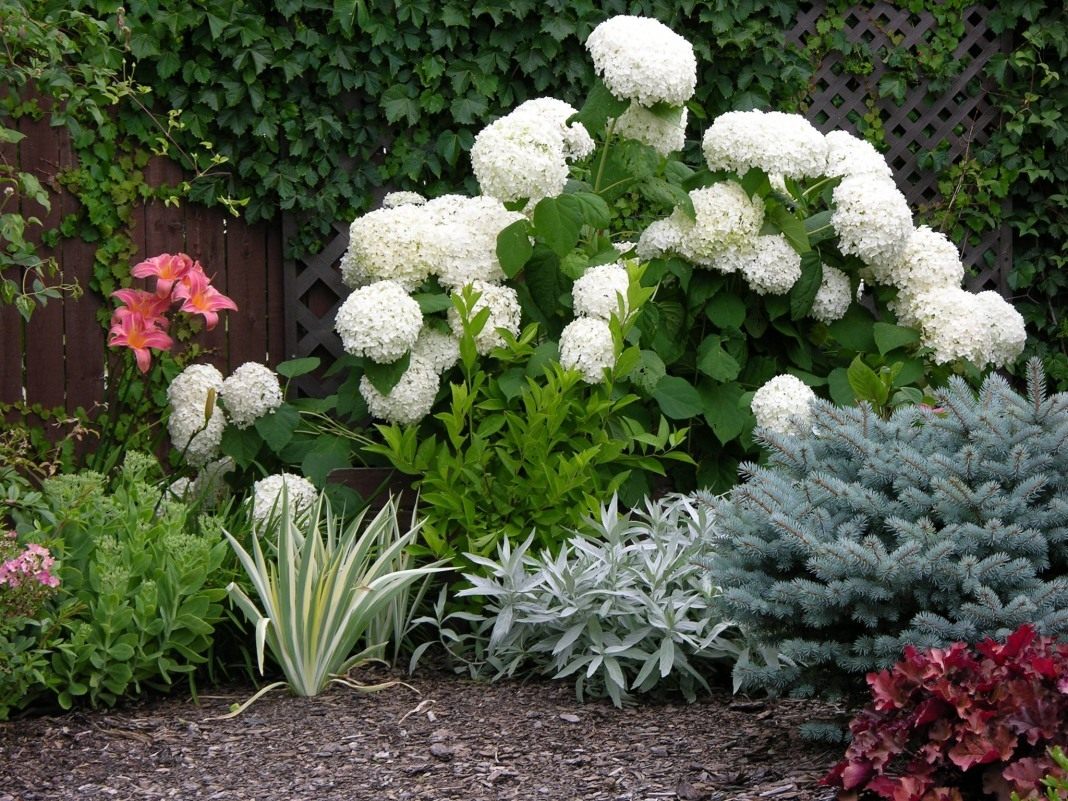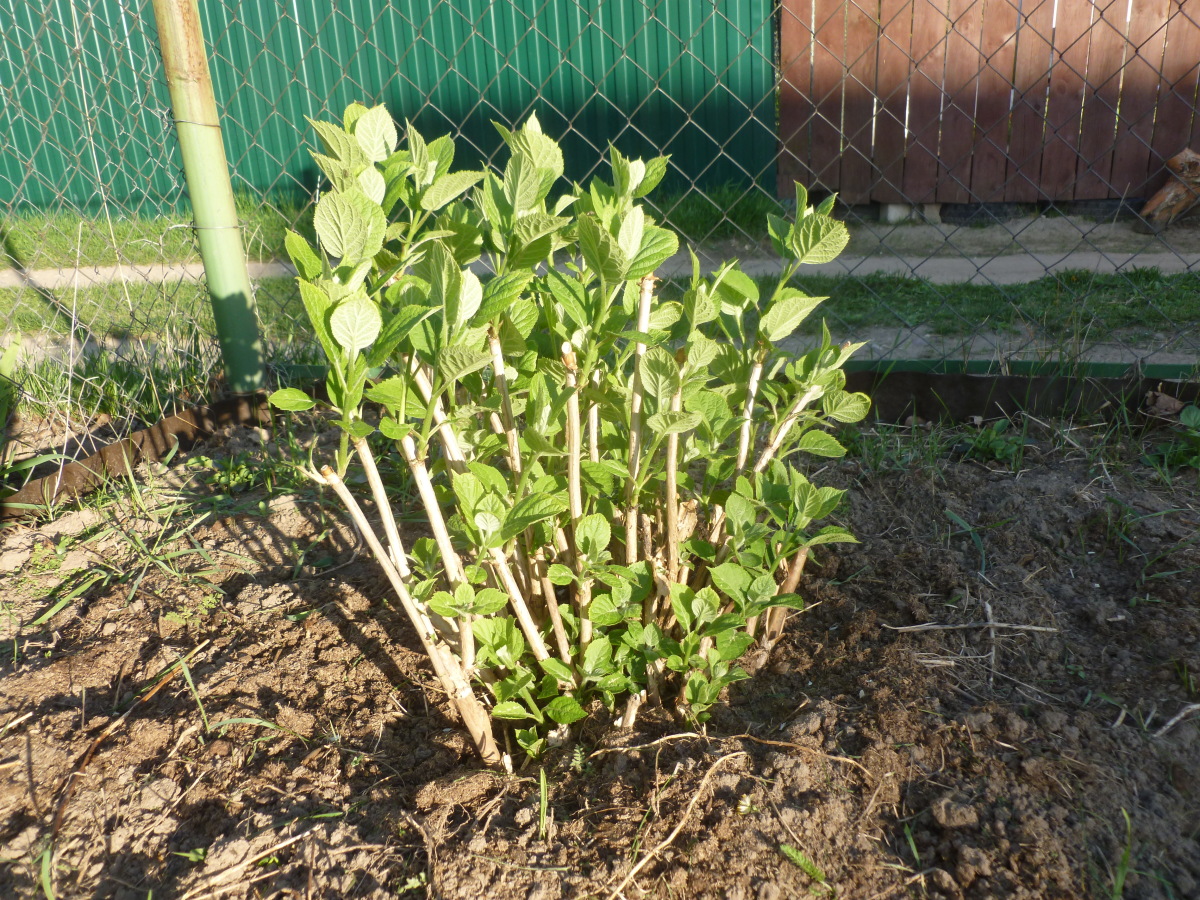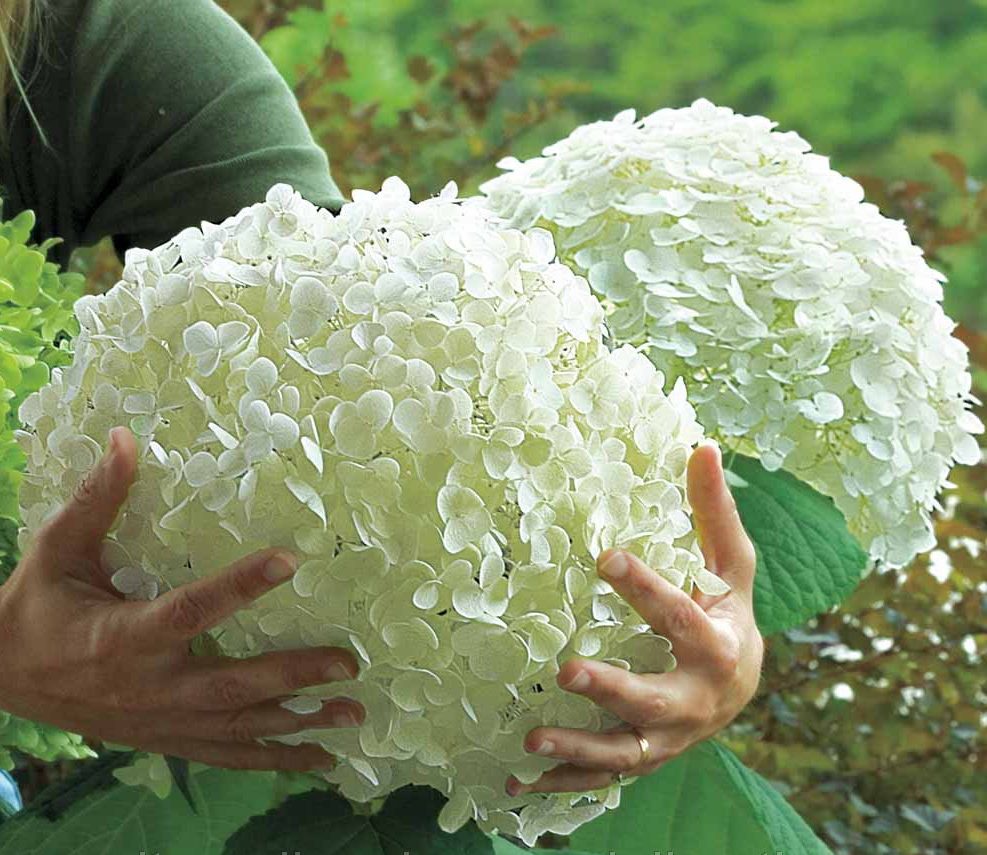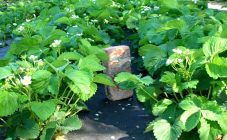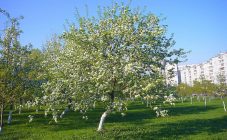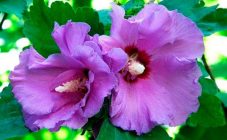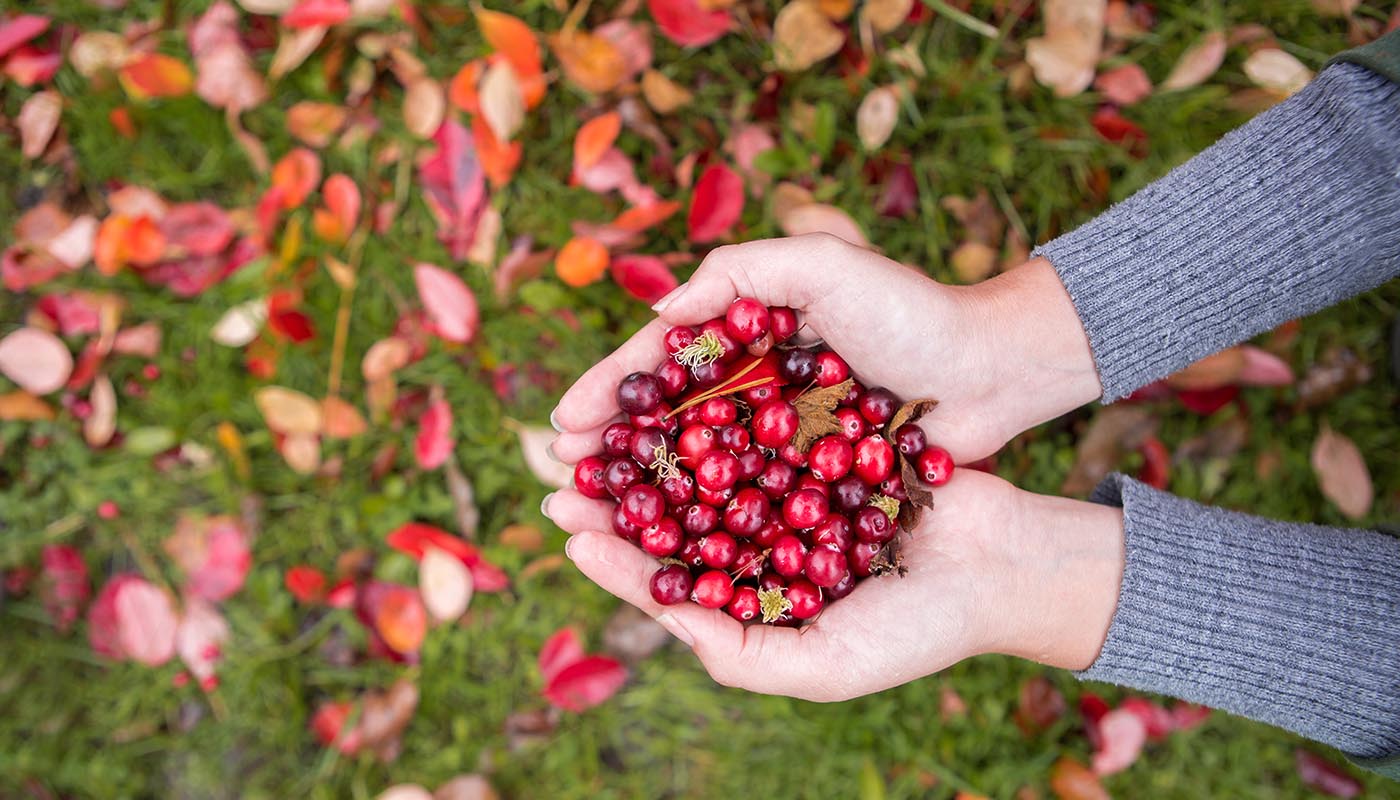Content:
A plant that gardeners are always happy to see on their plots is hydrangea. At least 70 varieties of this plant are known, but only 30 varieties are considered cultivated. In the bulk, the garden hydrangea is bushy. Some species form into small trees. Wild plant species can be seen in North America, parts of China, Korea, Japan, the Himalayas and the Philippines.
Most of the plants are not demanding to care for, but here there are rules that ensure abundant flowering. It often happens that the buds that appear just fall off, for no particular reason. All this indicates a violation of the techniques for the maintenance and care of the plant. Read more about the reasons for the lack of color and the correct content of plants.
Description of the plant
Hydrangea is a plant that belongs to the Hortensia family. Plants often grow as trees, shrubs, but can be presented in the form of vines. Flowering is collected in a ball, represented by small flowers, do not have a scent.
Most gardeners prefer to grow deciduous hydrangea species. Such varieties usually begin to bloom in the first month of summer and continue to delight with a lush, bright color until late autumn. The flower of the plant is a lush large inflorescence. Depending on the species, the inflorescence can be paniculate, corymbose or spherical.
Several types of flowers can be combined in inflorescences. The middle part of the bloom consists of small flowers, the rest are placed along the edge, they are more noticeable. A flower bouquet of hydrangeas can contain different shade colors: cream, white, blue, pink, red and all shades of lilac.
Interesting is the fact that the pH level of the soil can help change the color of the inflorescences. In neutral soil, the plant can bloom in cream, beige and other neutral colors. The earth, saturated with alkali, gives pink and lilac hues. The increased acidity of the soil can cause the bright blue color of the inflorescences to appear.
Hydrangea does not bloom, what to do
You can often hear from gardeners that the garden hydrangea does not bloom, the reasons for which are not known. There are several factors explaining why hydrangea does not bloom in the garden.
Factors affecting flowering:
- The location of shrubs in a shady area and improper pruning - all this does not help a plant of any varieties to bloom;
- Bad weather is bad for kidney development, which is considered an important nuance. This problem is more typical for plant varieties with a large leaf. This is due to the peculiarity of the location of the buds, which are laid on the upper shoots that appeared in the past year. Such flowering provides a full-fledged shelter of shoots for the winter, it is important to do this to preserve all flower buds.
Getting a hydrangea tree to give abundant color is not difficult.
If the garden hydrangea does not bloom what to do:
- Timely and properly nourish the plant. Hydrangea needs to be fed with organic substances, but it should be remembered that it is useful to apply a limited amount of fertilizer. If you overdo it on fertilizer, lush blooms can be unsuccessfully expected for long periods.It is best to carry out top dressing in small quantities, while nitrogen fertilizer should be used once a year - in the spring;
- Good quality soil. For the full formation of buds and their intensive flowering, a loose, slightly acidic soil is needed. It is important to enrich the soil with humus. Soil mulching is another process important for flowering;
- When planting flowers, you need to remember the culture's love for diffused sunlight. The arrangement of shrubs in shady areas is another reason why hydrangea does not bloom in the garden. You can make the culture delight with lush buds in open sunny areas, but such flowering will not last long, due to the rapid burnout of the petals. The spreading crown and foliage of walnuts will not create special problems in this process;
- The full value of the plant directly depends on the power of the roots. The faster the root system is formed, the earlier the first buds with flowers will appear;
- Correct soil fertilization. Hydrangea does not tolerate heavily fertilized soil, in this case the leaf will grow and strengthen, but the plant itself will not bloom for sure.
To speed up the process of the appearance of inflorescences, you need to fertilize the soil several times according to the scheme:
- Apply nitrogen-based fertilization at the end of spring. Thus, the vegetation of the crop can be improved;
- During flowering, plants are fertilized several times in the summer. A universal mixture for garden plants is introduced;
- To strengthen the shoots, plant nutrition before the winter cold, hydrangea is fertilized with the arrival of autumn.
It is impossible to determine exactly when a culture will first start producing bright buds. This process is influenced by many factors, such as the composition of the earth and its quality characteristics, illumination, and even the frequency and amount of soil moisture. Any deviation can explain why blue hydrangea does not bloom in the garden. Bringing the desired indicators back to normal should help the appearance of flower buds.
How to prepare a plant for cold weather
Hydrangea is a thermophilic plant, does not tolerate cold weather. Its preparation for the winter period should be dealt with before other crops. Freezing of the buds should not be allowed, as this will lead to the absence of beautiful inflorescences. Preparation should start immediately after flowering.
In the fall, the shrubs are freed from the deciduous part, the branches are collected to a heap and covered with any warming material. Further, the bushes need to be tilted slightly to the ground and covered with coniferous branches. Any type of cover can be used. The main thing is to keep the plant from frost and not break the branches. Roots can be covered with a large layer of coniferous mulch. When the frosts recede, and spring comes fully, the plant is returned to its normal position and opened.
Pruning is best done with the arrival of spring. Preparing for winter, only faded buds are removed. For especially heat-loving varieties, pruning can be carried out before the branches are sheltered for the winter. It is best to prune branches before the first buds and leaves appear. When rejuvenating old shrubs, pruning is best done in early spring. In general, you should focus on the characteristics of hydrangea varieties.
Hydrangea varieties
Most of the representatives of the culture are shrubs. Although the tree-like small variety and vines are also popular. They are characterized by large and small leaves, paniculate or corymbose type of inflorescences. In any case, the inflorescences are located at the tops of the shoots.
Tree hydrangea
Representatives of the species are bushes growing up to 150 cm in height.Usually the species is large-leaved, the length of individual leaves can reach 20 cm. The leaf blade is slightly lowered down, has a heart-shaped notch and notches along the edge. The upper part of the leaf is green, and the bottom is of a bluish tint.
The following varieties are considered bright demanding representatives of the species:
- White House is a bush whose height varies from 1 to 1.5 m. It has large thyroid inflorescences;
- Invincibelle Spirit - maximum height - 1.2 m. Large inflorescences consist of sterile flowers. Initially, the color of the buds is bright pink, then it can fade to light pink;
- Incrediboll - it has large and lush spherical inflorescences, white;
- Hayes Starburst - low bushes with thin shoots. Branches often break under the weight of large flower buds. Terry flowers, their diameter in some cases reaches 25 cm;
- Annabelle - has white, sterile inflorescences, up to 20 cm in diameter.
Paniculate view
The main difference between panicle hydrangeas and tree-like ones is inflorescences. The buds consist of a combination of large sterile and small fruiting blooms that can grow up to 25 cm long. During the flowering process, the buds can change color more than once. The foliage of this type of culture is large, can have an ovoid or elliptical shape. Flowering usually occurs during the transition period from June to July.
Popular representatives of the species:
- Vanilla freise - can grow up to 2 m in height. The inflorescences are strawberry pink;
- Phantom - the bushes are distinguished by spreading crowns, growing at least 2.5 m. The first inflorescences appear creamy shades, then they begin to turn pink;
- Pinky-Winky - maximum height - 1.8 m. Inflorescences are an openwork purple-pink bud;
- Limelight - at the beginning of flowering, the buds are greenish, which at the end radically change color to pink.
Care professional advice
Despite the relatively simple requirements for the content of the culture, there are rules, the observance of which affects the quantity and quality of flowering.
Basic care recommendations:
- Moderate fertilization of hydrangeas with mineral and organic (manure mixture, humus) substances is required. You need to fertilize the bushes without fanaticism;
- It is worth watering the plant with water with an acidity of no more than 5.6 pH. We must not forget that the culture loves moisture, therefore, the soil must not be allowed to dry out;
- Be sure to loosen the soil at least 3 times per season. Loosening depth should be from 5 cm;
- It is best to prune the shoots in the spring, after the buds have swollen. So that the bushes overwinter well, young shoots are cut to 4 buds. To renew old bushes, they are pruned at the root.
